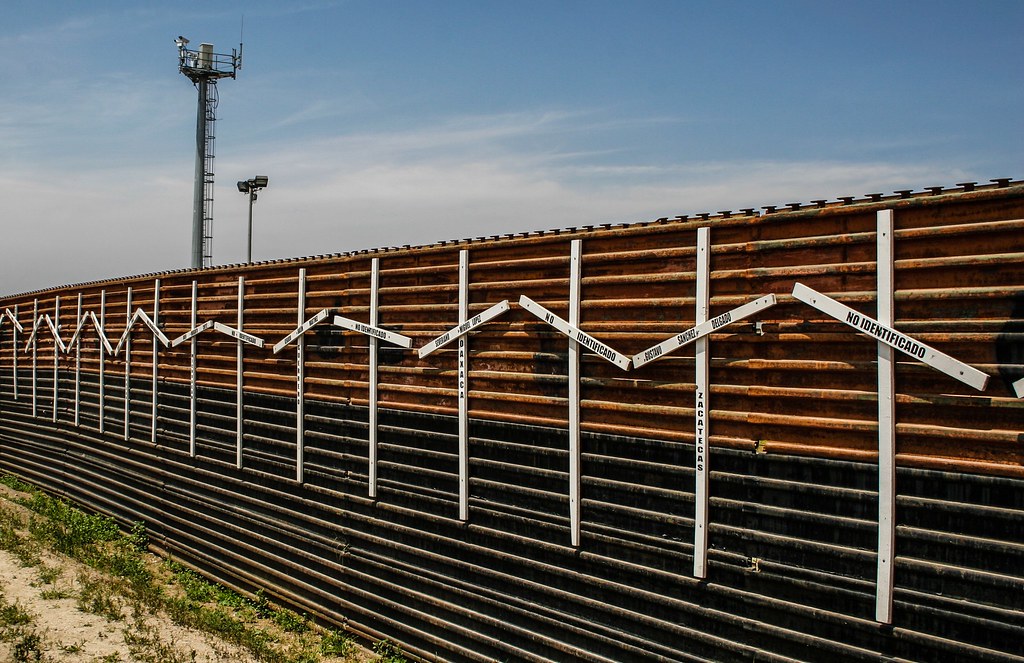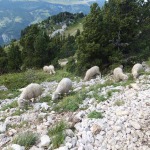學者警告,美墨邊界牆可能危害德州境內瀕臨滅絕的動植物,也不利於當地成長中的生態旅遊業。
德州大學奧斯汀分校整合生物學系教授富勒(Norma Fowler)和凱特(Tim Keitt)的研究,2日刊登於同儕評閱的《生態與環境前線》(Frontiers of Ecology and the Environment)期刊。
文中分析,如果德州1900多公里的墨西哥邊界被進一步封閉,將造成棲地破壞、破碎化和生態系統破壞。

跟德州相比,其他州的美墨邊界牆較短,且設有許多障礙物。德州目前的邊界牆只有大約160公里。
美國總統川普視美墨長城為他任期內的重要計畫。1日川普更將美墨長城計畫與墨西哥和加拿大的北美自由貿易協定(NAFTA)談判掛鉤。
美國國會剛通過決議,聖安娜國家野生動物保護區(Santa Ana National Wildlife Refuge)免築邊界牆,但也提出許多其他聯邦土地上蓋邊界牆的新建議,總計好幾公里,大部分位於下大河谷國家野生動物保護區(Lower Rio Grande Valley National Wildlife Refuge)。
「目前這些邊界牆不是在城市就是在沙漠。但是蓋在格蘭德河(Río Grande)附近完全是另一回事。因為這條河流的存在,加上德州向南延伸,我們有豐富的生物多樣性。我和另外一位德州生物學家非常擔心(邊界牆)影響我們的自然遺產。」富勒說。
兩位作者回顧14篇相關文獻,包括部分研究現有邊界牆後續效應的文章,條列出對新邊界牆的種種擔憂,包括建築圍牆和在牆兩邊鋪設道路可能造成棲息地破壞。
美洲豹貓是一種被列為瀕危物種的小型本土野貓,其棲息地已經嚴重流失。德州公園和野生動物相關單位估計,德州只剩下不到120隻,科學家擔心圍牆會進一步減少其個體數量。
圍牆造成棲息地的破碎化,可能使德州和墨西哥的豹貓、黑熊與其他物種的成員間無法聯繫,導致部分種群數量太少而無法延續。
另外一個值得關注的是破壞Tamaulipan荊棘灌叢生態的可能性。南德州有豐富的Tamaulipan荊棘灌叢生態,許多當地生物依賴這個生態系統生存,但隨著城市、農場和牧場的擴張,這個生態正在消失。
富勒說,要是這堵牆建起來,Tamaulipan荊棘灌叢生態將更岌岌可危。如果這堵牆阻礙了動物授粉和傳播種子,植物也會受到破壞。
因為這座牆應該不會建在格蘭德河的氾濫平原上,必須離河有點距離,可能會超過一英里(約1.6公里)。這可能破壞珍貴的河岸森林生態系統,阻擋需要進入河流的生物的路線,也阻止人們進入數個生態旅遊野保區。
對於邊界牆計畫免做某些環境審查,科學家也表示擔憂。
「減少屏障和相關道路的範圍,設計一些讓動物可以通過的屏障,用電子感測器等對生物比較無害的方法替代物理屏障,可以減輕負面影響。」作者寫道。
同樣在美墨邊界附近的亞利桑那州土桑生物多樣性中心,也對這個問題表示擔心,並稱川普的邊界牆對「當地多樣化野生動物、居民,以及崎嶇壯觀的風景來說都是悲劇。」該中心在法院、國會和邊界社區遊說反對長城時警告,這座牆「會破壞成千上萬英畝的棲息地並阻擋數十種動物物種的遷徙。」
A border wall between the United States and Mexico threatens to harm endangered Texas plants and animals and cause trouble for the region’s growing ecotourism industry, warn conservation biologists, led by a pair of scientists from the University of Texas at Austin.
In a letter published today in the peer-reviewed journal “Frontiers of Ecology and the Environment,” Norma Fowler and Tim Keitt, both professors in the Department of Integrative Biology at UT Austin, examine what would happen if more of Texas’ roughly 1,200 miles of border with Mexico were to be walled off, contributing to habitat destruction, habitat fragmentation and ecosystem damage.
Other states have shorter borders than Texas has and more barriers already in place; in Texas, there are walls along only 100 miles of the border with Mexico.
President Donald Trump has made construction of a border wall a signature issue of his presidency. On Sunday Trump linked his proposal to build such a wall to ongoing NAFTA trade negotiations with Mexico and Canada.
Congress just exempted the Santa Ana National Wildlife Refuge from the border wall project, but many miles of new barriers are proposed to be built on other federal lands, most of which are part of the Lower Rio Grande Valley National Wildlife Refuge.
“Up to now, the wall has either gone through cities or deserts. This is the Rio Grande we’re talking about here. It’s totally different,” Fowler said. “We have high biodiversity because of the river and because Texas extends so far south. I and other Texas biologists are very concerned about the impact this will have on our rich natural heritage.”
Based on a scientific literature review of 14 other publications, including some that looked at effects of existing walls and fences on the border, the authors outlined concerns about the proposed wall, including habitat destruction and degradation caused by the construction of the wall and the roads on either side of the wall.
The ocelot, a small native wildcat listed as an endangered species, has already suffered from severe habitat loss. The Texas Parks and Wildlife Department estimates there are no more than 120 left in Texas, and scientists worry that the wall would further deplete their numbers.
With habitat fragmentation, the wall could cut off ocelot and black bear populations in Texas and Mexico from other members of their species, leaving some populations too small to persist.
Of particular concern, write Fowler and Keitt, is damage to Tamaulipan thornscrub, a once abundant but now rare ecosystem in South Texas. Many South Texas organisms depend on this ecosystem, but it is disappearing as cities, farms and ranches move in.
The living things that depend on it would lose access to some of the last remaining patches in Texas if the wall were built, Fowler said.
Plants would be damaged if the pollinators and seed-dispersing animals that they depend on could not cross the barrier.
Because the wall will probably not be built in the flood plain of the Rio Grande, it will have to be set back from the river, sometimes by more than a mile. This has the potential to damage the valuable riparian forest ecosystem along the river, cutting off organisms that need to get to the river and preventing people from accessing several wildlife refuges along the river used for ecotourism.
Scientists also expressed concern about the border wall project being exempt from environmental review requirements.
“Negative impacts could be lessened by limiting the extent of physical barriers and associated roads, designing barriers to permit animal passage and substituting less biologically harmful methods, such as electronic sensors, for physical barriers,” the letter states.
Based in Tucson, Arizona, near that state’s border with Mexico, the Center for Biological Diversity shares these concerns, saying the border wall planned by President Trump would be “a tragedy for the region’s diverse wildlife and people, as well as its rugged and spectacular landscapes.”
It would “destroy thousands of acres of habitat and halt the cross-border migration of dozens of animal species,” the Center warns as it fights the proposed wall in the courts, in Congress and in border communities.
※ 全文及圖片詳見:ENS












